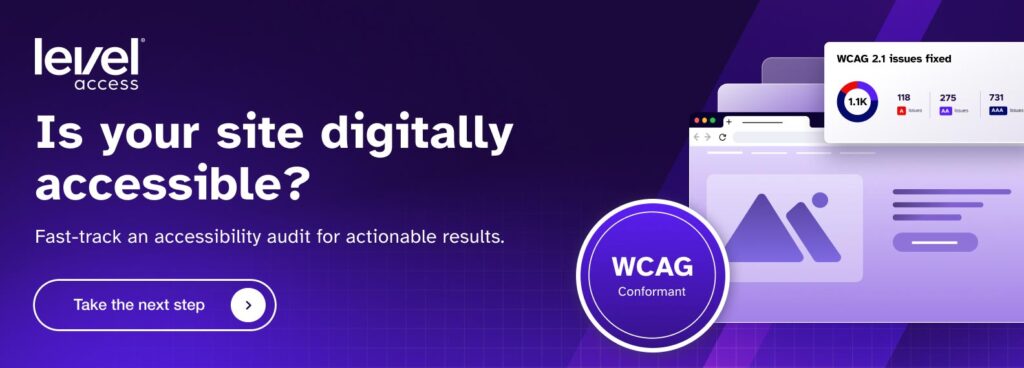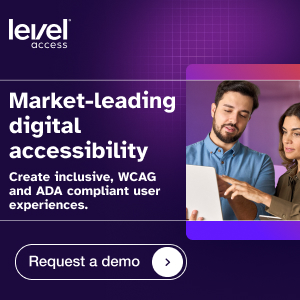In today’s digital landscape, ensuring website accessibility isn’t just a recommendation—it’s a necessity. Automated testing solutions, also known as accessibility checkers, serve as crucial tools for organizations striving to create inclusive online experiences while maintaining compliance with accessibility laws. As the digital world continues to evolve, these tools have become increasingly sophisticated, allowing teams to rapidly identify many common accessibility barriers.
Understanding accessibility checkers
An accessibility checker is another term for an automated accessibility testing tool. These specialized tools evaluate digital content against established accessibility standards, including the Web Content Accessibility Guidelines (WCAG), which is widely accepted as the benchmark for ADA compliance.
Automated testing solutions have revolutionized the way organizations approach digital inclusivity, transforming what was once a fully manual process into a more streamlined, efficient operation. Today, many accessibility checkers can scan entire websites, applications, and documents, providing detailed reports and actionable recommendations.
Beyond accelerating organizations’ compliance efforts, advanced testing tools can serve as educational resources for teams. Tools that provide contextual information about issues can help developers and content creators deepen their understanding of digital accessibility standards while implementing best practices.
The business impact of accessibility checkers
Effectively integrating digital accessibility solutions, including automated testing tools, isn’t just a compliance best practice—it’s a business driver. Approximately 15% of the global population lives with some type of disability, and in the U.S. alone, adults with disabilities control an estimated $490B in disposable income annually. By removing barriers to digital access, businesses can reach this massive market segment. Identifying common issues is the first step toward accomplishing this goal.

Key features of website accessibility checkers
Today’s accessibility testing tools have evolved to offer comprehensive features that address the complex requirements of digital accessibility. Automated scanning capabilities can now detect a wide range of issues, from alt text omissions to improper ARIA labels.
Additionally, some sophisticated automated testing tools not only flag issues, but also provide context-aware suggestions for remediation. These tools offer specific guidance on how to fix problems, often including code examples and best practice recommendations.
Many automated testing tools are part of broader digital accessibility solution sets, which also include:
- Real-time monitoring: Monitoring tools run automated scans at regularly scheduled intervals, helping teams maintain compliance as content changes.
- Detailed reporting: Reporting dashboards allow organizations to track their accessibility progress over time and prioritize improvements.
Combining automation with human expertise
While today’s automated tools are powerful, they represent only one part of a comprehensive accessibility strategy. Automated tools can detect many common issues, but they’re not yet capable of identifying all barriers that users may face. To gain a complete understanding of a website’s accessibility, teams should combine automated testing with manual evaluations by accessibility experts, including people with disabilities. Human review is essential for surfacing issues automated tools miss, as well as evaluating more nuanced aspects of accessibility like the clarity of alternative text or the logical flow of content.
Human teams are also necessary for ensuring that the findings identified by automated testing tools are actioned on. Organizations that successfully implement accessibility checking often establish dedicated accessibility teams who work alongside automated tools. These individuals help interpret test results, prioritize fixes, and ensure that accessibility remains a consideration throughout the design and development process.
Common challenges and solutions
While automated testing can streamline many aspects of accessibility, organizations often face challenges when implementing accessibility checking tools. One common problem lies in the overwhelming number of issues that tools may surface, which can leave teams unsure where to start. The solution lies in developing a structured approach to prioritizing fixes, focusing first on critical issues that affect the largest number of users.
Another widespread area of difficulty is maintaining accessibility as websites evolve. To address this challenge, teams should choose a digital accessibility solution that offers continuous monitoring tools in addition to an accessibility checker. A comprehensive solution should also provide tools that allow developers to test their code for accessibility barriers before it moves to production. By catching issues early in the development process, teams can proactively prevent accessibility problems, reducing the number of issues that must be reactively fixed.
Implementation process
To ensure the successful implementation of automated accessibility tools, follow a structured approach:
- Initial assessment: Run a comprehensive scan of your website or other digital experience to obtain a general benchmark of its accessibility. Combine this scan with a manual evaluation by an accessibility expert, which will surface issues the automated scan may miss and provide deeper context.
- Prioritization and planning: Prioritize issues identified in your initial assessment and create an action plan for fixing them.
- Monitor progress: Schedule regular tests of your website or digital experience and track your progress over time.
- Iterate and improve: Establish processes for swiftly addressing new issues as they surface and gather feedback from people with disabilities to further improve user experience. Work to proactively embed accessibility into your experience creation life cycle, including training team members on accessibility best practices.
The role of AI in accessibility checking
Artificial intelligence is driving rapid advancements in accessibility checking tools. Machine learning algorithms can now suggest specific remediations for accessibility issues and automate certain fixes. Automated remediation technology is particularly valuable for large websites that need to maintain a baseline level of accessibility across thousands of pages.
Further developments in AI have the potential to significantly improve the accuracy and coverage of automated accessibility testing tools, and power more sophisticated reporting.
Creating sustainable accessibility practices
Long-term digital accessibility success requires more than just running periodic checks. Organizations need to build a culture of accessibility, where consideration for users with disabilities becomes part of every decision. This involves regular training, clear policies, and ongoing commitment from leadership. It also requires proactively integrating accessibility into the digital experience creation life cycle, so errors are prevented before they reach users.
While accessibility checkers are just one piece of a sustainable digital accessibility program, they’re a valuable starting point. And as these tools become more advanced, teams will be able to achieve their accessibility goals more efficiently, and on a larger scale, than ever before.

